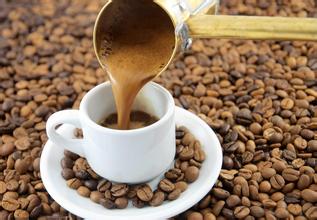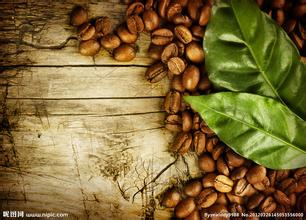Smooth, rich Hawaiian coffee flavor description Grind characteristics Variety processing Introduction
But to the regret of coffee fans, only about 1400 hectares of coffee is produced. And because of Hawaii's high income and a large number of tourists, Kona coffee is so expensive that it is even sold as "konablend" (no more than 5 per cent of Kona beans). In recent years, neighboring islands such as maui, kauai and molokai have also begun to grow coffee commercially.
Hawaii's coffee industry has to compete with the expanding tourism industry. Most coffee is grown on the slopes of MaunaLoa. Mauna Loa was originally a volcano located in the western part of the Kona region on the island of Hawaii. The coffee producing area is about 30 kilometers long and its growing areas are mainly concentrated in the north and south of the area. Coffee trees are planted in relatively desolate areas, but their soil is fertile and contains volcanic ash. Although it takes a lot of physical labor to start planting and it is difficult to manage, it is comforting that Kona's coffee trees (at least those growing above 90 meters above sea level) do not seem to be affected by any diseases and insect pests. Hawaii is the largest island in the Hawaiian islands, so it is also called the theBigIsland. Kona coffee is produced in the west and south of the Kona region of Hawaii. Coffee trees are found on the slopes of Hualalai and MaunaLoa, which are 150m to 750m above sea level, just right for coffee growth.
The excellent quality of Kona coffee benefits from the suitable geographical location and climate. Coffee trees grow on the slopes of volcanoes, and their geographical location ensures the altitude needed for coffee growth; the dark volcanic ash soil provides the minerals needed for coffee growth. The climatic conditions are very suitable. In the morning, the sun gently passes through the air full of water vapor. In the afternoon, the mountains will become more humid and foggy, and the white clouds surging in the air are natural umbrellas for coffee trees. And the evening will become sunny and cool, but there is no Frosts Descent. Because of the suitable natural conditions, the average yield of Kona coffee is very high, reaching 2240 kg per hectare, while in Latin America, the yield of coffee per hectare is only 600kg ~ 900kg.
In 1813, a Spaniard first grew coffee in the ManoaValley Valley of Oahu, which is today the main campus of the University of Hawaii. In 1825, an English agronomist named John Wilkinson transplanted some coffee from Brazil to grow in the coffee garden of Chief Birch on the island of Oahu. Three years later, an American missionary named Samuel Riveland Rags brought the branches of the coffee tree from Birch Emirates Garden to Kona, a descendant of the Arabica coffee tree that first grew on the Ethiopian plateau. To this day, Kona Coffee still carries on its noble and ancient lineage.

Important Notice :
前街咖啡 FrontStreet Coffee has moved to new addredd:
FrontStreet Coffee Address: 315,Donghua East Road,GuangZhou
Tel:020 38364473
- Prev

Introduction of Colombian Coffee Grinding characteristic Price Variety Baking record degree Manor producing area
The pure taste of Colombian coffee, in addition to the natural environment with the most favorable conditions for coffee growth, is inseparable from the hard work of local growers. In Colombia, coffee cultivation has reached 1.07 million hectares, there are about 302000 coffee plantations in the country, and 30 to 40 per cent of the rural population depends directly on coffee production. There are many farms in Colombia, but
- Next

Introduction to the flavor description characteristics of Lindong coffee in Sumatra and the taste of price treatment method
Half of Sumatra's Mantenin beans are washed beans and the other half are air-dried beans. Raw beans are so ugly that many novice coffee roasters misunderstand their appearance and think they have been cheated. But when Mantenin coffee beans are roasted, especially after deep roasting, their appearance is rich and round, with a strong texture, and the coffee oil on the surface is not.
Related
- Detailed explanation of Jadeite planting Land in Panamanian Jadeite Manor introduction to the grading system of Jadeite competitive bidding, Red bid, Green bid and Rose Summer
- Story of Coffee planting in Brenka region of Costa Rica Stonehenge Manor anaerobic heavy honey treatment of flavor mouth
- What's on the barrel of Blue Mountain Coffee beans?
- Can American coffee also pull flowers? How to use hot American style to pull out a good-looking pattern?
- Can you make a cold extract with coffee beans? What is the right proportion for cold-extracted coffee formula?
- Indonesian PWN Gold Mandrine Coffee Origin Features Flavor How to Chong? Mandolin coffee is American.
- A brief introduction to the flavor characteristics of Brazilian yellow bourbon coffee beans
- What is the effect of different water quality on the flavor of cold-extracted coffee? What kind of water is best for brewing coffee?
- Why do you think of Rose Summer whenever you mention Panamanian coffee?
- Introduction to the characteristics of authentic blue mountain coffee bean producing areas? What is the CIB Coffee Authority in Jamaica?

